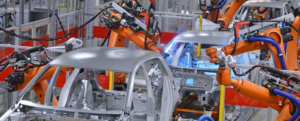Plasma spray coating is a powerful and versatile technique which can enhance the properties of materials and offers many applications across industries. This cutting-edge method involves the deposition of a protective or functional coating onto a substrate using a high-temperature plasma jet.

The Plasma Gun
At the heart of the plasma spray coating process is the plasma gun, a device that generates a plasma jet by ionising a gas, typically argon, in a high-frequency electric field. This ionised gas reaches temperatures exceeding 10,000 degrees Celsius, creating a state of matter known as plasma. This intense heat allows for the melting or partial melting of the coating material, which is then propelled onto the substrate in the form of fine droplets.
Advantages of plasma spray coating
One of the primary advantages of plasma spray coating lies in its ability to accommodate a wide range of materials, including ceramics, metals and polymers. The process also enables the deposition of coatings with unique microstructures, tailored to meet specific performance requirements.
Whether it’s creating a hard surface for wear resistance or a porous structure for thermal barrier coatings, plasma spray technology offers a customisable solution for a myriad of engineering challenges and specialists such as https://www.poeton.co.uk/standard-treatments/plasma-coatings/ offer a wide variety of plasma spray processes.
What is plasma spray used for?
The plasma spray coating process excels in its ability to coat complex geometries and large surfaces with uniform thickness. This feature makes it a preferred choice in industries such as automotive, aerospace and energy, where intricate components and large-scale applications are common.

The plasma spray coating process remains at the forefront of materials science, offering endless possibilities for the future of surface engineering. It is a go-to solution for industries seeking innovative ways to improve the performance of their components.

